|
||||||
| HOME Power Cabooses Rolling Stock MoW Depots | ||||||
|
Part
1
|
Part
2
|
Part
3
|
Part
4
|
Part
5
|
More
|
|
 |
 |
 |
 |
 |
 |
|
| Pre 1960s | 1960s | 1970s | 1977-80s | Still in Service | Preserved | |
| T&P-Built C&EI-Built Transfer |
Bay Window Extended Vision |
Short Bay Window | Trace current Assignments & Locations | Elvin Klepzig's State-by-state list | ||
Cabeese, Crummies & Hacks
Part One, Pre 1960s - Wood, Magor-type, Baggage-Coach, and Standard Steel Cabooses
By Todd Greuter
The MoPac fielded one of the most colorful caboose rosters of any road, with hundreds of variations ranging from the earliest four-wheel Iron Mountain 4-wheel bobber to the range-wandering drovers, from the bay-window and wide-vision types, off-center cupolas built by Texas & Pacific and MP's own Sedalia and DeSoto Car Shops, Magor-types, the no-frills transfer cabooses, and the home-designed & built short-bay window road caboose. Wood bay-window cabs with side doors, both horizontal and vertical wood sheathed cabs, and cabs which were barely more than boxcars with windows round out the list. The dramatic differences in caboose design could be seen working side by side up until the end of the caboose era.
M&I enginehouse at Ste Genevieve, MO with M&I Caboose sitting on the lead. - David Beckermann Collection
| Early Wooden Caboose |
There were almost as many different varieties as there were total cabooses in the Missouri Pacific's early years. Good images of these cabs as they originally appeared are rare.
Missouri Pacific and Iron Mountain
Cabooses on the system before 1918: #1-399.
With the Cosolidation of Iron Mountain cabs: #400-625 were added. The Iron Mountain consolidated with Missouri Pacific in 1917.
Later additions of wooden equipment included the Homebuilts, Passenger Car Emergency Cabs, AC&F Standard Wood Cabs, and the Drover Cabooses (which were assigned to the western lines of the system).
Pre-merger partner Texas & Pacific had it's characteristic Muley cabs, Drover/Combination Cabs, Standard wood cabs, and later it's Steel Homebuilts (see T&P-buit Steel Caboose below).
The term Drover cabooses describes a cars that are designed to carry persons accompanying stock trains moving cattle, hogs, or sheep to market. Many of these cars have cupolas and a few have bay windows. Some drover cabooses were rebuilt from passenger cars. It is not uncommon for drover cars to have doors in the side of the car for loading gear and supplies.
Cupola Bay-Window cabooses were wooden MoPac cars that had both cupolas and bay windows.
Side Door cabooses were standard cars built with or later had side doors added for limited freight items and are called side door cabooses.
Bobber cabooses are older, wood, 4 wheel cabooses some of which were converted to 8 wheel cabooses early in the last century. Many bobbers have cupolas on top. Bobbers are still used on a number of miniature riding railroads. MoPac predecessors St. Louis Iron Mountain & Southern, and the Texas & Pacific each owned a few of these early cars.
 |
MP 541 - side-door cab with no 'porches" at Star City, AR on 5/1/49. Built in November 1909, this car was originally owned by predecessor road St Louis Iron Mountain & Southern. The torn hunk of wood that appears to be on the roof is actually part of the building behind. - photo: C. W. Witbreck, John C. La Rue, Jr. collection/ Todd Greuter Purchased Collection. Contact John for a list of his r.r. photos. |
 |
MP 1103 - this drover caboose is typical of the type seen on the MoPac, and was built in 1930. Seen at Galveston, Texas, date unknown. - photo: W. H. B. Jones, John C. La Rue, Jr. collection/ Todd Greuter Purchased Collection. Contact John for a list of his r.r. photos. |
|
Photos on other sites:
Jerry Michels' book Cabooses of the Missouri Pacific Lines is an excellent resource chronicling the early Mopac wood cabooses. |
| T&P "Muley" Cabooses |
|
The wooden "Muleys" lacked the end platforms, giving them a very distinctve appearance, and were a favorite design of the Texas & Pacific, owning 53 of the Long Muley class alone. T&P #2435 shown below was part of the first group of Long Muley's to be built at the T&P's Marshall shops in Texas during 1928. This class was stretched version of their earlier short Muley sisters. |
 |
Texas & Pacific 2435 - A Long "Muley" caboose, at Whitecastle, Louisiana on August 21, 1953. Notice the T&P tender in eagle colors coupled to the car. - photo: C. W. Witbeck, John C. La Rue, Jr. collection/ Todd Greuter Purchased Collection. Contact John for a list of his r.r. photos. |
| KO&G Home-built Cabooses |
|
Kansas Oklahoma & Gulf short cabooses, #1529 and 1530 had an odd end cupola arrangement and rode on an old steam tender frames. Both were home-built by KO&G sister Midland Valley in 1933. Back when the MP (via TP) assumed control of the MV/KOG, this caboose was assigned to the Kirkwood local. A jobs conductor had been complaining about the condition of his 700 series wood caboose and as a result this car was assigned to his train. After a few trips banging down the track, he wanted his wood hack back. (B. Hoss) KO&G 1529 and 1530 were used at Muskogee and Tulsa for local switching. The assignment at Muskogee was on the local that went all the way around town, from Shopton on the southeast side to the Gar track on the north side. There were several customers in downtown Muskogee (where the mall is now) that were served on this track. Incidentally, the Gar track was the original mainline of the Muskogee Union RR, soon changed to the MO&G, and later to the KO&G. I never heard why it was referred to as the "Gar" track, but that was the way it was listed in the ETTs. Perhaps it related to the GAR (Grand Army of the Republic) in some way. (J. Fike) #129 Is today privately owned and resides as part od a dress shop in Webster Groves, Missouri. Retired in the 1960's, this car is belived to never have went on to wear MoPac paint, though it was "assigned" a MP number as #13222. Built in October 1948, the 1532-37 series were unusual in that they were built with plywood sides, though were a bit more of a standard home-built caboose design. All went on to be lettered for MoPac. KO&G 1538 was a real oddity, built in 1949 and being a whopping 44 feet in length with a centered cupola, plywood sides and fishbelly underframe, it was possibly the longest caboose to run on the MoPac system. It went on to become Missouri Pacific 13230. |
 |
KO&G 1529 - at Wichita, Kansas circa 1953. This neat little caboose with the odd end cupola arrangement rides on an old steam tender frame, and was one of two home-built by MV. - photographer unknown, John C. La Rue, Jr. collection/ Todd Greuter Purchased Collection. Contact John for a list of his r.r. photos. |
 |
KO&G 1536 - in a later two-tone company scheme, . at Houston, Texas in October 1966. It went on to become MP 13228 before its retirement in 1968. - photographer unknown, John C. La Rue, Jr. collection/ Todd Greuter Purchased Collection. Contact John for a list of his r.r. photos. |
| Idler Cars |
|
Though officially a Float Idler car, these were essentially a caboose in construction, so they are also included here. MoPac had a number of these specialized cars, the X 284 below serviced from Vidalia, LA to Natchez, Mississippi. The Idler, or Reach cars were simply a flat car with crew accomodations, and were used by the locomotive crew to more safely "reach" cars on river ferrys. |
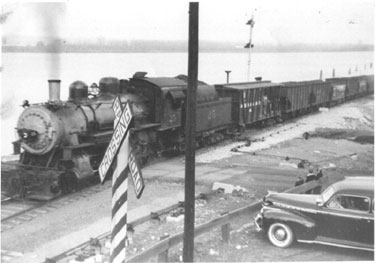 |
|
M&I #25 pulling a cut of cars up the incline from the transfer boat, the "Ste Genevieve" at Ste Genevieve, MO, on the Mississippi River. Notice the M&I idler car/caboose just behind the steam tender. The M-&I had several of these cars, used to "reach" the freight cars and draw them from the ferry without putting the full weight of the locomotive on the deck. - David Beckermann Collection |
 |
MP X 284 - at Ferriday, Louisiana on April 26, 1969. Its actual built date is unknown, though a similar car, Idler X 638, was built in 1936. The X 284 was retired in 6/71. - John C. La Rue, Jr./ Todd Greuter Purchased Collection. Contact John for a list of his r.r. photos. |
| Magor-style Steel Caboose |
The Magor-style cabs (after a design of early steel cabooses built by Magor Corporation, with their characteristic short body and centered cupolas) were the first way-cars of all-steel construction obtained by the Missouri Pacific. An order was made for thirty-five steel cabs from the Magor Car Corp. in 1937 (MP 910-934). Something must have appealed to the company about this style of cab, for in 1951 and '53 the railroad would produce some forty home-built copies of these cars at their own Sedalia car shops. MP 1234 would go on to be the only known survivor from this series, on permanent display at Pueblo, CO. The final Magor-types to be obtained by the system came through Texas & Pacific subsidiary Kansas Oklahoma & Gulf (KO&G). Some were International Car built and others were home-built cabs, with a ten-foot longer body length than the original Magors, measured at approximately 44'.
Click on the thumbnails to see a larger image
 |
|
 |
T&P 13242 - at Dupo, Illinois on July 28, 1973. Built in 1952 by IRC, the former KO&G 1550 is now lettered for T&P in full MoPac paint and numbers. - photographer unknown, John C. La Rue, Jr. Collection / Todd Greuter Purchased Collection. Contact John for a list of his r.r. photos. |
|
The MoPac's "Magor" copies were strictly home-built, not made from Magor kits. They had a very different arrangement of windows, end rails, door windows and cupola. The C&EI "Magor" copies were AC&F cars, but looked much more like the original Magor cars. (J. Michels) |
| WWII-era Steel Baggage-Coach Caboose |
Sometimes called a Drover's caboose, these all-steel, all-welded cars were the first of their kind on the system, long before mainline freight service saw steel cabooses begin to replace wood-sheathed models dating back to the turn of the century. Destined for branchline work, MP's Sedalia shops built nine of these combination cars in 1939 and 1942. Similar wood-sheathed combo-cabooses had been used on the MoP, including a few with bay windows.
Roger Kirkpatrick lists two railroad terms that may be used to describe this car type:
Cabbages are a combination of caboose and baggage car with the baggage portion used for less than car load (lcl) freight as well as packages and mail. They have side doors in the baggage portion. These are usually rebuilt baggage cars or combines and often have a cupola.
Combooses include the characteristics of a cabbage plus have an area for passengers. These are usually rebuilt passenger coaches or combines (coach & baggage car combination), often had a cupola added, and, in a few cases, a bay window.
 |
|
| Standard Steel Caboose |
Using the car frames from out-dated boxcars, the Missouri Pacific built 225 new all-steel cabooses at its DeSoto and Sedalia shops in Missouri in 1948 and 1950. This included 85 cabooses from the Texas Pacific. These would be replacements for an aging wooden caboose fleet. The origin of the cabooses builder can be determined easily... the Sedalia cabs were of a welded construction and the Desoto cars had riveted sides.
|
Series 13365-13493
- Standard
Steel Cupola Caboose
|
|||
| Plate - | AAR Class - | RR Class - | |
| Former Series Various | Built Various | Rebuilt - 1948 @ MP
DeSoto as 1016-1050 / 1949-50 @ MP Sedalia as 1170-1229 / 1960's @ Sedalia & '64-65 @ I.C. |
|
| Car Manufacturer originally MP home-built wood cabooses w/ 40 ton boxc. frames, rebuilt as welded or riveted steel | |||
| Outside Lg. 36' 11-3/8" (over roof) |
Outside Wd. 9' 1-11/16"
|
Outside Ht to Cupola 14' 0" | |
| Inside Lg. 31' 1" | Inside Wd. 8' 6-3/4" | Outside Ht. to Roof 11' 6-9/16" | |
| Cubic feet - | Load Limit - | Lt. Wt. 48,700 lbs. (Desoto) 45,400 lbs. (Sedalia), Rebuilt 49,700 lbs. | |
| Truck - A.S.F. A-3 | Wheel Diameter - 33" I-W Stl. | Hand Brake - Vertical Wheel Ajax | |
| Heating - Stove I-M.P. Std. | Smokejack Dickinson | Radio Motorola Motrac | Axle Driv. Alterntr. - Leece Neville |
 |
|
 |
 |
Missouri Pacific #12389 - at Bridge City, Louisiana; 7/25/87. It, along with a tank car and a boxcar, were donated to the Jefferson Parish Fire Training Center. No one knows what happen to the caboose, but the tank car and boxcar were sold for scrap and shortly afterwards the center director either got fired or quit. - Jerry Sires Photo / www.angelfire.com/la2/siresphotos |
|
* Fall 2001 Update: One
of only three Nebraska MoPac cabooses, the Papillion/Omaha car was repainted
overall red due to its deteriorating condition. See most
recent image below. |
 |
MP 13309 - 5/30/96 - Todd Greuter Photo · |
 |
MP 13309 - 5/30/96 - Todd Greuter Photo · |
 |
MP 13309 - 5/30/96 - Todd Greuter Photo · |
 |
MP 13309 - Originally built with four windows on this side and three on the other, after rebuilding, these were blanked-out. 6/14/97 - Todd Greuter Photo |
 |
MP 13309 - notice how much the original MoPac eagle/buzzsaw decals had faded and crackled in 5 years. Papillion Exit (south of Omaha), Nebraska; 2001 - Todd Greuter Photo · |
 |
|
 |
MP 13350 - A dramatic shot, the newly rebuilt standard steel welded caboose sitting outside in back of the MoPac's Sedalia, Missouri shops. - Missouri Pacific Photo/Daryl Favignano Collection |
 |
|
 |
MP 13491 - rumbles over UP(?) track through Cozad, Nebraska on July 1977. - © copyright Glen Beans, used with permission. Note: this is a high-res file (236 kb). |
 |
MP 13309 - 5/30/96 - Todd Greuter Photo · |
 |
MP 13309 - 5/30/96 - Todd Greuter Photo · |
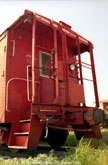 |
MP 13309 - 5/30/96 - Todd Greuter Photo · |
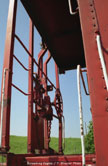 |
MP 13309 - 5/30/96 - Todd Greuter Photo · |
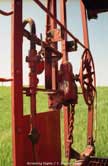 |
MP 13309 - 5/30/96 - Todd Greuter Photo · |
 |
MP 13309 - 5/30/96 - Todd Greuter Photo · |
 |
MP 13309 - 5/30/96 - Todd Greuter Photo · |
 |
MP 13309 - 5/30/96 - Todd Greuter Photo · |
 |
MP 13309 - 5/30/96 - Todd Greuter Photo · |
 |
MP 13309 - Showing the old heavy boxcar framework used in the building of these cabooses at MP's DeSoto shops. - Todd Greuter Photo |
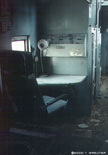 |
MP 13309 - View of the conductor's office. |
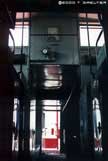 |
MP 13309 - looking up towards the cupola and the emergency brake lever. |
![]()
|
|
Featured
Photographers: |
|
trainweb.org/screamingeagle l Last Update
to this page: 25 April, 2008
|
|
| All images & text © 2000-2008 T. Greuter / Screaming Eagles, unless otherwise noted. All Rights Reserved. | |